Q
What's the Oil Capacity of Toyota Yaris' Engine?
The oil capacity of Toyota Yaris' engine is typically around 3.5 to 4 liters. However, it's important to note that this value may vary slightly depending on factors such as the specific engine version, production year, and production batch. To get the most accurate information about the exact oil capacity of your Toyota Yaris, it's highly recommended that you refer to the vehicle's owner's manual. This manual will provide precise details for your specific vehicle. Additionally, when servicing or changing the engine oil of your vehicle, you should follow the vehicle specifications to ensure the correct amount of oil is added. Adding the right amount of engine oil is crucial as it affects the engine's performance, lubrication, and overall lifespan.
Special Disclaimer: This content is published by users and does not represent the views or position of PCauto.
Related Q&A
Q
What kind of engine is in the Toyota Yaris 2023?
Toyota's 2023 Yaris hits Malaysian roads with two engine choices to suit different drivers. There's the tried-and-tested 1.5L four-cylinder naturally aspirated unit (codename 1NZ-FE), paired with a conventional 4-speed automatic transmission. Then you've got the more advanced 1.5L three-cylinder Dynamic Force engine (M15A-FKS), which comes mated to Toyota's snappy Direct Shift-CVT for a nice blend of pep and fuel efficiency.
What really stands out about the Dynamic Force mill is Toyota's latest tech: it uses D-4S dual-injection and a high compression ratio to push out 106 hp and 140 Nm of torque. More importantly, it's tuned for better combustion efficiency, meaning it sips less fuel – perfect for Malaysia's stop-start city traffic. If you like a bit more fun behind the wheel, the 1.5L three-cylinder variant even throws in a Sport driving mode. On the flip side, the naturally aspirated four-cylinder wins points for being easy on maintenance costs.
Both engines play by Malaysia's emission rules and stay true to Toyota's reputation for bulletproof reliability. So, local buyers basically have two solid paths: go for the three-cylinder if you want the latest tech, or stick with the four-cylinder if you value tried-and-true simplicity. Your call depends on your budget and what you prioritize most.
Q
What is the eco mode on a Toyota Yaris 2024?
The 2024 Toyota Yaris' ECO mode is a fuel-saving driving aid that cuts down on gas use by tweaking engine output and transmission shift patterns. It's perfect for Malaysia's stop-and-go city traffic. Flip it on, and a green ECO light pops up on the dashboard to let you know you're in efficiency mode. The AC system also dials itself back to a more economical setting automatically. Sure, it takes a tiny bit of edge off the throttle response, but the payoff is better fuel economy – we're talking about saving roughly 10-15% on gas over time.
One thing to keep in mind: when you need to make a quick overtake or climb a steep hill, just switch ECO mode off for that instant power kick. Now, other car brands do have similar fuel-saving tech, but each one tunes it a little differently. Toyota's ECO mode here is specially optimized for Southeast Asia's hot and tropical weather, striking a good balance between AC performance and saving fuel. It's a nice touch that shows Toyota really thinks about the specific needs of different regions.
Q
What is the update for the Toyota Yaris in 2024?
The 2024 Toyota Yaris has landed in Malaysia with a bunch of upgrades, focusing mainly on sprucing up its looks, tech features, and powertrain. The new Yaris rocks sharper LED headlamps and a redesigned front bumper, giving it a sportier overall stance. Inside, there's a larger touchscreen that now supports wireless Apple CarPlay and Android Auto, making the whole connectivity experience way smoother. Under the hood, it sticks with the tried-and-tested 1.5-liter Dual VVT-i engine paired with a CVT gearbox, but with some tweaks to boost fuel efficiency—perfect for Malaysia's city driving. Safety-wise, every trim gets the Toyota Safety Sense suite as standard, packing handy features like pre-collision system and lane departure alert.
It's worth noting that the Southeast Asian market Yaris isn't the same as the European version. Toyota's tweaked the suspension setup and equipment packages to suit local road conditions and what Malaysian buyers actually want. That's pretty standard for global automakers, right? They tailor stuff to different markets to better meet local needs. For Malaysian shoppers eyeing a small hatchback, the Yaris' solid reputation for reliability and Toyota's strong after-sales network are still big draws. And with these 2024 updates, it just got even more competitive in the segment.
Q
How many cylinders are in the 2024 Toyota Yaris?
The 2024 Toyota Yaris hits the Malaysian market with two powertrain options. The 1.5-liter naturally aspirated engine features a 4-cylinder (inline-four) setup, while the 1.5-liter hybrid variant pairs a 3-cylinder engine with an electric motor. This compact hatchback stays true to Toyota's reputation for affordability and practicality. The four-cylinder version caters to those who value smoothness and dependability, whereas the three-cylinder hybrid is better suited for fuel-efficiency seekers.
In Malaysia, the Yaris has struck a chord with young drivers and small families, thanks to its nimble handling and Toyota's extensive after-sales service network. It's worth highlighting that the three-cylinder engine has effectively mitigated the traditional issue of significant vibrations through technologies like a balance shaft. Additionally, the hybrid system delivers impressive fuel savings, which is a big plus given Malaysia's relatively high fuel prices.
No matter which powertrain you choose, the 2024 Yaris comes standard with Toyota Safety Sense, Toyota's active safety suite that includes pre-collision warning and lane-keeping assist. This gives it a competitive edge in its segment.
Q
How to open gas tank Toyota Yaris 2024?
Popping open the fuel cap on the 2024 Toyota Yaris is a breeze. When the car's unlocked, just give the right side of the fuel door (located on the rear right flank of the vehicle) a light push, and it'll spring open. No extra steps or fiddling with interior levers – it's one of those handy little refinements Toyota's been rolling out lately to make life easier.
Now, here's the thing to watch for: some Malaysian-market versions might come with a locking fuel cap. If a gentle press doesn't do the trick, head over to the driver's seat, check the left-side control panel for a fuel door release switch (it's got the gas pump icon), and give that a try. You'll usually find this setup on the higher-spec trims. If you're ever stuck the first time, it's always a good idea to flip through the owner's manual – specs can vary a bit from one market to another.
For other Toyota models like the Vios or Corolla, the fuel cap operation is pretty similar, though some older models might still stick with the traditional interior pull lever.
And hey, living in Malaysia with its hot and rainy weather can take a toll on rubber seals over time. It's worth making a habit of checking that fuel cap seal every now and then to keep rainwater and dust from getting into the fuel system. If you notice the cap isn't closing properly or starts making weird noises, swing by an authorized service center. It's usually a quick fix and won't cost you an arm and a leg.
Q
How many seats are in the Toyota Yaris 2024?
The 2024 Toyota Yaris hits Malaysian roads as a practical 5-seater, sticking with the tried-and-true 2+3 seating layout that's perfect for everyday family duty. The seats themselves are designed to balance comfort with space efficiency, making this little hatch a solid pick for city commutes and small families alike.
What's worth noting is that as a key player in Toyota's global lineup, the 2024 Yaris offers Malaysian buyers a choice between a 1.5L petrol engine and a hybrid powertrain. Clocking in at around 4 meters long, it's firmly in the B-segment hatchback category. Now, rear legroom is on the snug side, but Toyota has tweaked the seatback angle and cushion design to make the back seats more livable.
Rivals like the Honda Jazz and Mazda 2 also offer 5 seats, but the Yaris fights back with the inherent advantages of the TNGA platform – think a lower center of gravity and sharper, more agile handling. Plus, the 2024 update brings some nice touches for rear passengers, including added USB ports and storage cubbies, which are always handy.
If you're a Malaysian buyer needing more seats, Toyota's got you covered with options like the 7-seater Rush or the 8-seater Innova MPV. But for many, the Yaris' fuel-sipping nature and compact dimensions that make parking a breeze keep it a top choice in traffic-congested cities like Kuala Lumpur.
Q
How to set cruise control on Toyota Yaris 2024?
Setting the cruise control in the 2024 Toyota Yaris is a breeze. First, make sure you're rolling at over 40km/h, then hit the "CRUISE" main switch on the right side of the steering wheel – you'll see a white cruise indicator pop up on the dash. Next, accelerate to your desired speed, say 110km/h like you'd typically use on the highway, and flick the "SET-" lever down to lock it in. The light turns green when it's active and good to go. Need a little speed adjustment? Use the "+" or "-" lever to nudge it up or down in 1.6km/h increments. Tap the brakes or hit "CANCEL" to pause it temporarily, but you'll need to press the main "CRUISE" switch again to shut it off completely.
A quick heads-up for Malaysian drivers: it's smarter to stick to manual driving in rainy or foggy conditions, or on KL's busy roads. Remember, this is basic cruise control – it won't automatically detect obstacles ahead, so no full-speed adaptive magic here. The Honda City and Nissan Almera in the same class offer similar features, though their controls are laid out a bit differently, so it's worth flipping through the owner's manual to get the details right. And don't skip regular brake checks – they're key for safe cruise use. That said, on long hauls up and down the North-South Expressway, this feature really helps take the edge off driver fatigue.
Q
What is the hold button on a Toyota Yaris 2024?
The "Hold" button on the 2024 Toyota Yaris is a handy driving assist feature, especially useful for Malaysia's hilly terrain and stop-start traffic. When you've come to a complete halt – say, at a red light or in a traffic jam – a quick press of this button lets you take your foot off the brake pedal. The car's electronic system then takes over, automatically holding the brakes to prevent any rolling, and only releases when you hit the accelerator again. It's a real leg-saver, trust me, especially during those long waits.
You'll typically find this kind of feature on cars with electronic parking brakes. How does it work? Basically, the electronic control unit steps in to do the job that a traditional handbrake would. Now, important to note: this isn't the same as Hill-Start Assist Control (HAC). HAC is that brief helper when you're pulling away on a slope, stopping you from rolling back. The "Hold" function, on the other hand, actively keeps the car stationary once you've stopped.
This little gem really shines during those scorching Malaysian afternoons when you're stuck at a long traffic light. My advice? Familiarize yourself with where the button is, and give the owner's manual a quick read to get the lowdown on exactly how it operates. Different car brands might call it something else, but the core idea is pretty much the same.
Q
How to change Toyota Yaris to kmh 2024?
To switch the instrument cluster display units on the 2024 Toyota Yaris from mph (miles per hour) to km/h (kilometers per hour), you'll typically use the settings buttons on the dashboard or the vehicle information display. The exact steps might vary slightly depending on the trim level and configuration. First, start the vehicle, then look for the "DISP" or "SET" button – it's usually on the left side of the steering wheel or near the instrument cluster. Press that to enter the settings menu, navigate to the "Units" option, and select "km/h" to finalize the change.
If you run into trouble, don't guess – check your owner's manual or swing by a Toyota authorized service center. They'll get you sorted quickly. In Malaysia, km/h is the standard speed unit, same as most Commonwealth countries. Getting this setting right isn't just about convenience; it helps you stay within speed limits and avoids any mix-up-related tickets.
The Yaris has always been known for its user-friendly, straightforward controls, but let's be real – even small details can differ between model years and specs. Taking a few minutes to familiarize yourself with your specific Yaris's setup? Totally worth it for smooth, stress-free driving.
Q
How to open Yaris 2024 trunk?
There are several simple ways to open the trunk of the 2024 Toyota Yaris. The most direct way is to use the trunk release button on your remote key fob. Just press and hold it for about a second, and it will unlock automatically. There is usually a trunk release lever on the driver’s side door panel inside the car, which is very convenient for quick access when you’re parked. If you’ve got a higher - spec model with the smart induction feature, you can simply approach the trunk with your key in your pocket or bag and press the button on the tailgate to unlock it. It is worth noting in terms of safety that the 2024 Yaris has an effective security upgrade that ensures the trunk can only be opened when the vehicle is unlocked, which helps keep your valuables safe from theft. For our Malaysian friends, the hot and humid weather here can sometimes affect the sensitivity of electronic components. So, it’s a good idea to check your key fob battery regularly and keep the trunk’s mechanical lock hole lubricated. These simple maintenance tips can greatly extend the service life of the relevant components. If you ever encounter a situation where the trunk won’t open, refer to your owner’s manual for the emergency mechanical release steps, or reach out to your nearest authorized Toyota Malaysia service center. They will provide you with professional assistance.
Latest Q&A
Q
How to change the ambient lighting in a Jaguar F-Pace?
Changing the ambient lighting color in your Jaguar F-Pace is a breeze. First, fire up the vehicle and make sure the infotainment screen is on. Then, head into the main menu and look for the "Vehicle Settings" option. Select "Ambient Lighting" from there, and you'll see a bunch of preset colors to choose from—blues, reds, whites, that sort of thing. Just tap your favorite on the touchscreen, and the system applies it right away. You can also tweak the brightness to fit different driving conditions. If you're a Malaysian owner, it's best to do this at night or in dimly lit areas so you can really see how it looks.
The ambient lighting in the F-Pace isn't just about upping the interior's premium vibe; it lets you set the mood in the cabin to match your personal style. It's a pretty common feature in luxury brands these days—Mercedes and BMW offer similar stuff—but what sets Jaguar apart is how well the lighting pairs with the interior materials. It just makes the whole cabin feel that much more luxurious. If you're really into customizing your in-car lighting, swing by your local Jaguar dealer and ask if there are any extra customization options or upgrade services available.
Q
How to set up cruise control in Jaguar F-PACE?
To set up cruise control in your Jaguar F-Pace, first make sure you’re on a road where it’s safe to use—you’ll need to be going at least 30 km/h. Hit the cruise control button on the left side of the steering wheel (it usually says "CRUISE" or has a speedometer icon), and you’ll see the cruise ready indicator pop up on the dashboard. Next, use the "+" or "-" buttons to set your desired speed, and the system will hold it steady. Need to pause? Just tap the brake or hit "CANCEL". To get back to your set speed, press "RES".
For our Malaysian drivers, a quick heads-up: be extra cautious using this on busy roads or in the rain. Don’t zone out and rely too much on the system—always keep an eye on what’s happening around you. The F-Pace’s standard cruise is solid, but step up to higher trims and you might get Adaptive Cruise Control (ACC), which automatically adjusts your speed to keep a safe gap from the car ahead. Either way, *you’re* still in charge—never take your focus off driving.
Lastly, keep those brakes and tires in check; regular maintenance helps the cruise control work like a charm. If you see any warning lights or the system acts up, swing by an authorized Jaguar service center in Malaysia to get it sorted out. Safe travels!
Q
What's the price of the Jaguar F-Pace?
In Malaysia, the price of the Jaguar F-PACE can vary depending on the trim level, optional extras, and current market promotions. Right now, you're looking at a starting price range of around RM 400,000 to RM 600,000 for a brand-new model. For the most up-to-date figures, it's always best to check in with your local authorized Jaguar dealer.
As Jaguar's luxury SUV offering, the F-PACE doesn't skimp on choice under the hood. You've got efficient Ingenium turbocharged engines for everyday driving, and if you're after a bit more punch with some eco-credentials, there's the potent PHEV plug-in hybrid version too – it really strikes a nice balance between performance and fuel efficiency.
What stands out about this Jag is its elegant design language, a nicely crafted interior, and all the latest tech. The Pivi Pro infotainment system comes as standard, and you get a comprehensive suite of driver assistance features. It's a solid pick for Malaysian buyers who want that blend of luxury and a bit of driving excitement.
On top of that, Jaguar has a pretty well-established after-sales service network in Malaysia. Owners can take advantage of the brand's warranty coverage and maintenance services, which definitely adds peace of mind to the ownership experience.
If the F-PACE has caught your eye, it's worth cross-shopping with other premium SUVs in its class, like the BMW X3 or Mercedes-Benz GLC. That way, you can make a really well-rounded decision before signing on the dotted line.
Q
How many seats is the Jaguar F-PACE equipped with?
The Jaguar F-PACE, a premium midsize SUV, comes standard with a 5-seat layout in a 2+3 configuration, easily handling most families' daily travel needs. The seats strike a nice balance between sporty support and all-day comfort, making them ideal for those long highway stretches or busy city commutes here in Malaysia.
Under the hood, you've got options. There's the efficient four-cylinder turbocharged engine, or if you're craving more punch, the more powerful supercharged six-cylinder. Both pair with an 8-speed automatic transmission that does a solid job balancing eager power delivery with decent fuel economy.
Tech-wise, Jaguar's got you covered with their advanced InControl Touch Pro system, which includes Apple CarPlay and Android Auto – exactly what Malaysian buyers expect these days.
Step inside, and the F-PACE doesn't disappoint on space. That 2,874mm wheelbase translates to generous legroom for rear passengers, while the boot offers a practical 508 litres as standard. Need more? Fold those rear seats down, and you've got a cavernous 1,598 litres to play with – perfect for weekend getaways or those big shopping hauls.
And let's not forget our Malaysian climate. The standard dual-zone climate control helps keep things cool, but if you really want to dial in comfort, you can option up to the four-zone system – a definite plus when the mercury rises.
Sure, rivals like the BMW X3 and Mercedes GLC also offer five seats, but the F-PACE stands out with its distinct British design flair. Plus, that aluminium-intensive body construction gives it a weight advantage, which really shines through in terms of nimble handling – something that makes every drive that little bit more engaging.
Q
What are the differences between the Jaguar E-PACE and F-PACE?
The Jaguar E-Pace and F-Pace are two SUVs under the Jaguar brand, with the main differences lying in their positioning and size. The E-Pace is a compact SUV, boasting a more小巧灵活 (nimble and compact) body that makes it ideal for city driving and squeezing through tight roads. It's powered by a 2.0-liter turbocharged engine, delivering better fuel efficiency – perfect for young families or daily commuters.
The F-Pace, on the other hand, is a mid-size SUV offering significantly more space, especially in the rear seats and boot, making it a great choice for long road trips or users needing extra cargo capacity. It also comes with a wider range of powertrain options, including the punchy 3.0-liter supercharged performance variant.
Both models feature Jaguar's signature luxurious interior design and cutting-edge tech, but the F-Pace leans more towards a premium experience in terms of comfort and driving dynamics.
In the Malaysian market, the E-Pace comes with a relatively lower price tag, making it more accessible for budget-conscious buyers, while the F-Pace caters to those seeking more space and stronger performance. Both SUVs are available with all-wheel drive, which is well-suited to Malaysia's varied road conditions, allowing consumers to choose based on their actual needs. Additionally, Jaguar has a well-established after-sales service network in Malaysia, providing reliable peace of mind for owners.
View MoreRelated News
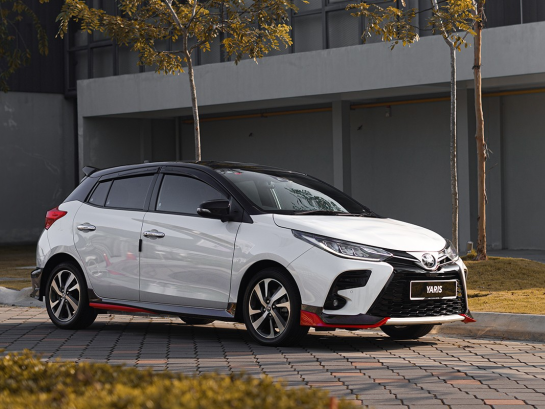
Toyota Yaris Interior Design Revealed: The Ideal Choice for Daily Commutes
AshleyJul 17, 2025
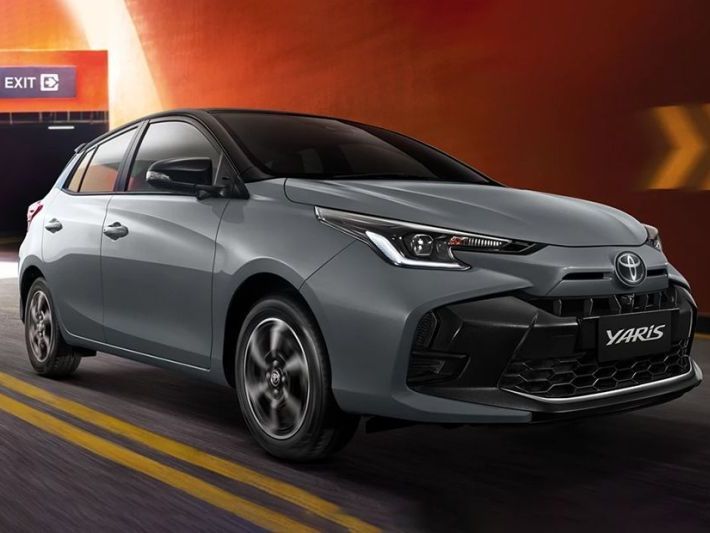
Highlights of the Toyota Yaris: The Perfect Fusion of Outstanding Power and Comfortable Handling
MichaelApr 16, 2025
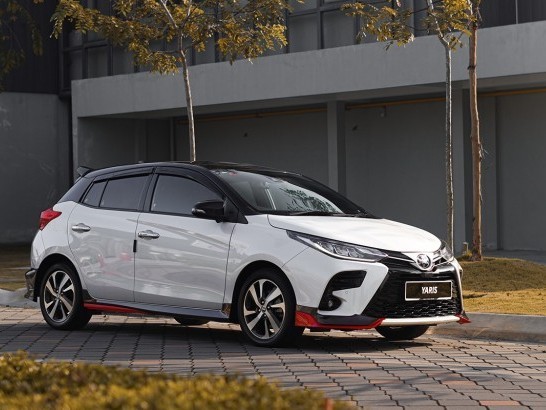
Is my Yaris fuel consumption normal? What should the fuel consumption per 100km be?
MichaelFeb 28, 2025

Toyota takes the crown at the second stop of the 2025 WRC, the GR Yaris helps Toyota take the top of the points table
JamesFeb 19, 2025

Starting from RM 88,000! The favorite of office workers, Toyota Yaris meets all your needs!
LienSep 4, 2024
View More



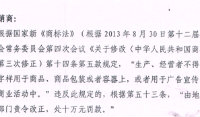







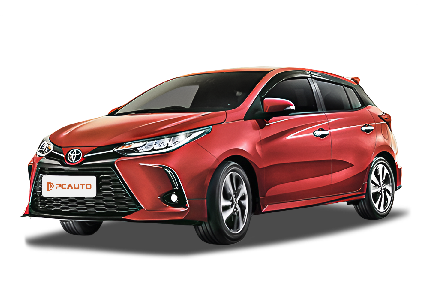





Pros
Cons